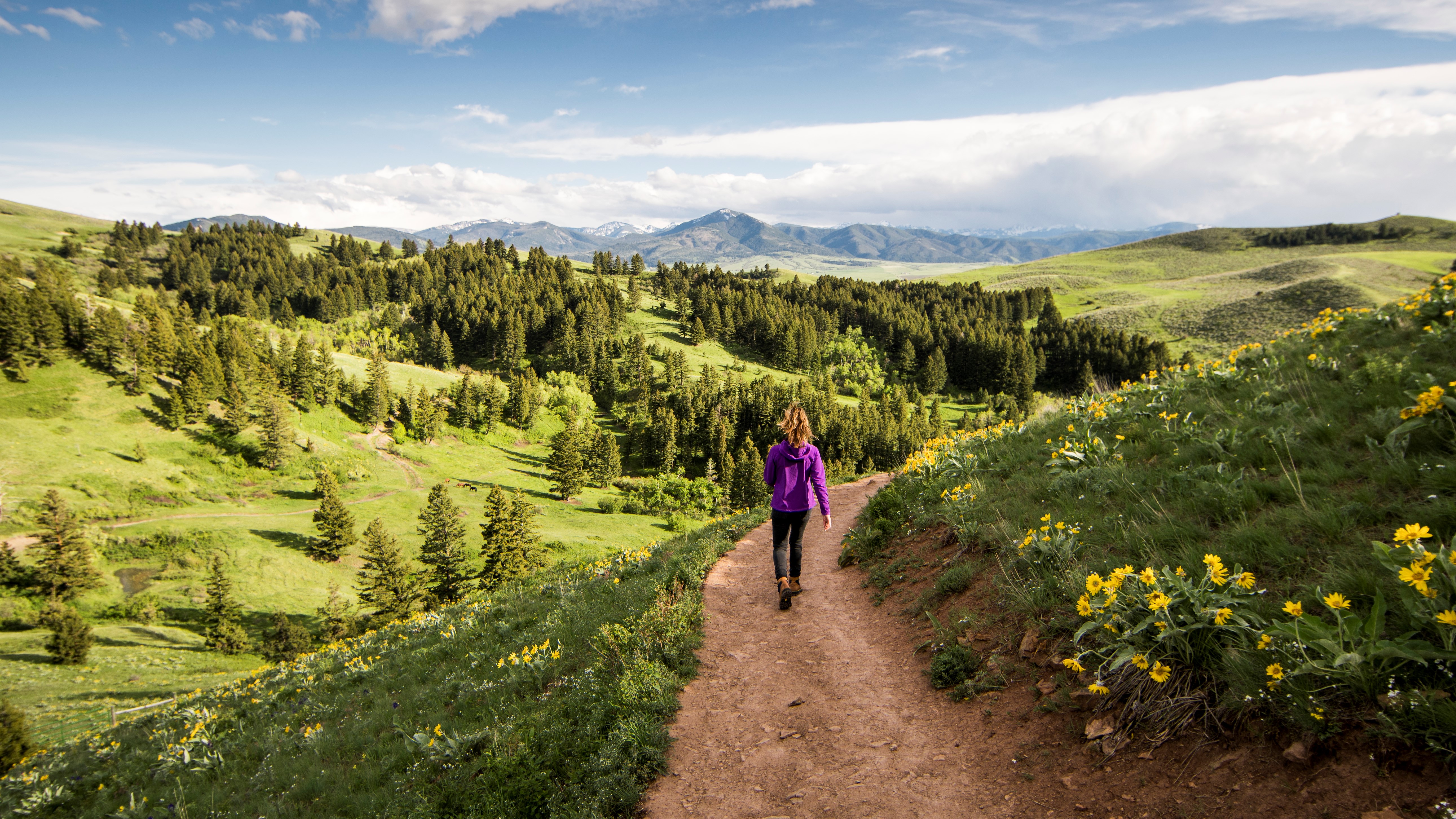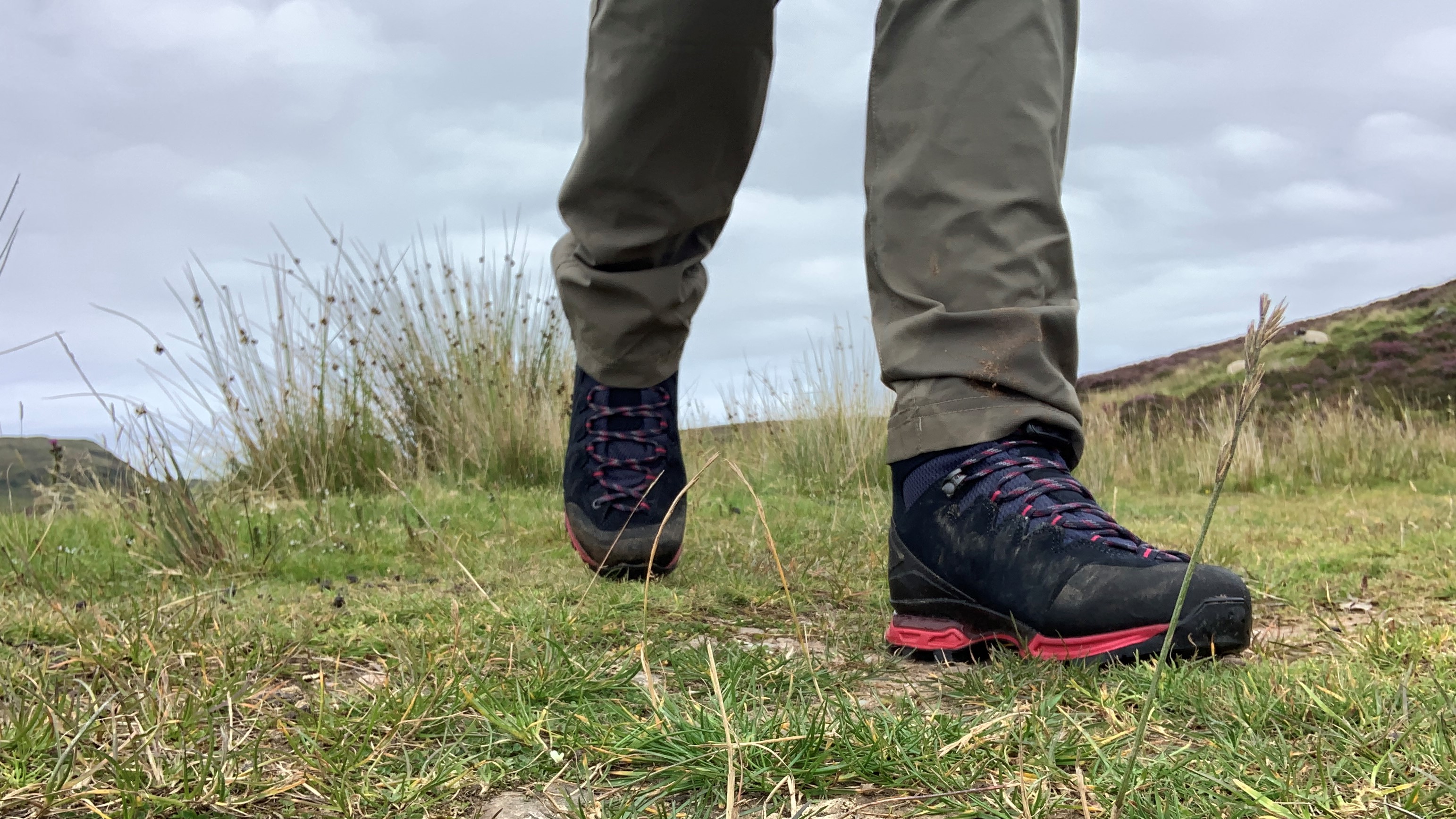
When you’re getting out your hiking boots to go for a long walk, there are dozens of different types of hiking trails to choose from, but you can loosely divide them up into two broad categories: out-and-back vs loop hiking trails.
Out-and-back trails are your standard pathways where you return the same way you went out, whereas loop trails are circular routes that start and finish in the same place, but never see you crossing the same ground twice. If you’re exploring new trails, or perhaps trying to choose a hike in a National Park where there are lots of options, there are lots of factors to consider, such as distance, intensity and beauty spots, but you may also be wondering if there are any advantages or disadvantages to hiking a loop over an out-and-back.
I personally love hiking in a loop. It brings me the same sense of satisfaction that I get from driving through several sets of lights without ever having to come to a complete stop. I suppose it appeals to my sense of adventure, but I also know many people prefer the predictability of an out-and-back, and I get that too.
As it turns out, though, there are some other great reasons to consider one over the other, such as navigation, views, crowds and impact. Read on to find out some of the key differences, and why you might want to go circular for your next hike.

Out-and-back hiking trails
Out-and-back hiking trails are delightfully straight forward. You simply hike out to your destination – a mountain summit, a waterfall, take your pick – then after stopping to rest your legs, take some photos and eat lunch, you turn around and walk in the opposite direction.
This uncomplicated approach to walking in the wild can feel as though it eliminates any possibility of becoming confused and losing your way, however we all know hiking is rarely that simple. Coming back the way, you could be tired, the light and conditions may have changed the visibility, and you’ll be viewing everything from a different perspective, so while you’ve definitely seen this trail before, you could still get lost if the trail isn’t clear. Always be mindful when hiking and carry a map of the area for safety.
Those among us who are always seeking novel experiences might think an out-and-back is a bit less exciting, because you essentially cross the same terrain twice, but an upside of this is that you don’t feel like you have to stop on the way out to admire the views behind you – you’ll get those on your way back to the trailhead.
Crossing the same terrain twice does have a downside, and that is that it means your presence has a greater impact on the earth, so make sure you don’t cut switchbacks to do what you can minimize the damage.
Additionally, on well-loved trails, every person who goes up the trail must come back the same way, so you may be more likely to encounter more cross traffic than if everyone is flowing in the same direction.

Loop hiking trails
What’s better than simplicity? Well, for a lot of us, there really is nothing more satisfying than hiking in a loop, where you follow a circuit back to your starting point.
Hiking on a loop trail – or making your own loop by connecting up several trails – delivers new scenery from start to finish. If it’s an established loop trail, it may be as easy or difficult to follow as any other trail, but if you’re connecting several trails, you do increase your chances of getting mixed up so make sure you bring your compass.
You may want to stop and admire the views behind you when you’re climbing, since you’re not going to see them again on your return, but that just gives you a chance to catch your breath. Plus, you can always hike the same trail another day in the opposite direction and have a whole different experience, making these trails more versatile too.
Another big upside of loop trails is that, because you only travel on the path once, your individual impact is reduced by half of that on an out-and-back trail, and that’s why a lot of National and State Parks have so many loop trails. Obviously, you can hike as far as you want along a larger loop trail and turn back, rather than completing the circuit, but since this will increase your impact it's obviously better for the environment to pick a loop you think you can complete.
As for traffic, it’s not a hard-and-fast rule that you’ll encounter less traffic on a loop trail, because hikers can obviously choose to go in either direction, but typically, a loop trail will have a more popular direction, meaning you can choose to go with the flow and avoid stepping aside too often, or take the direction less traveled.







